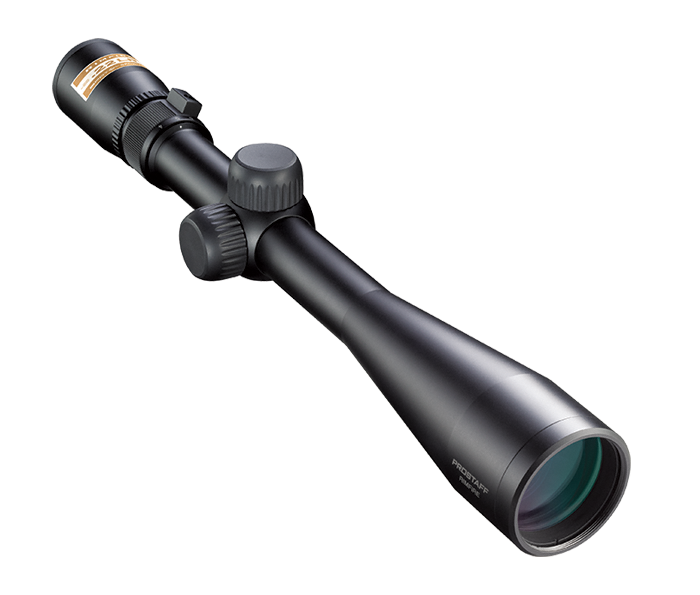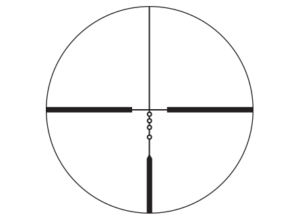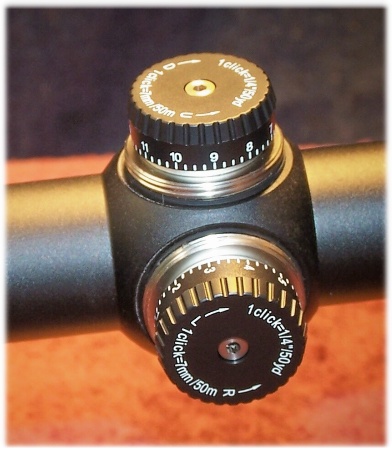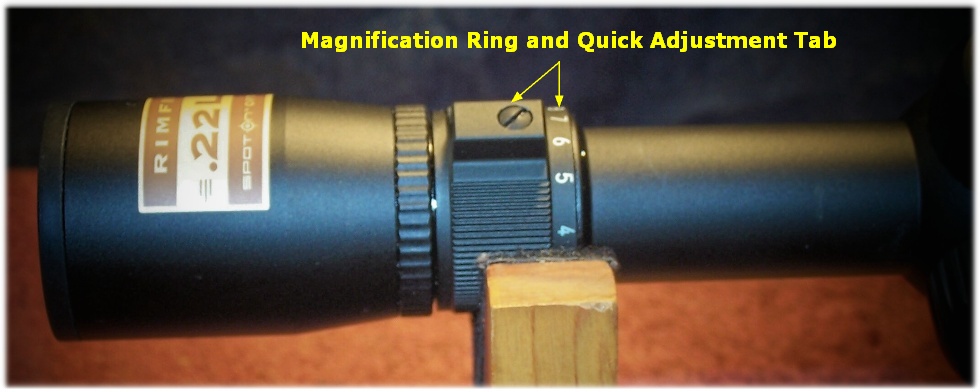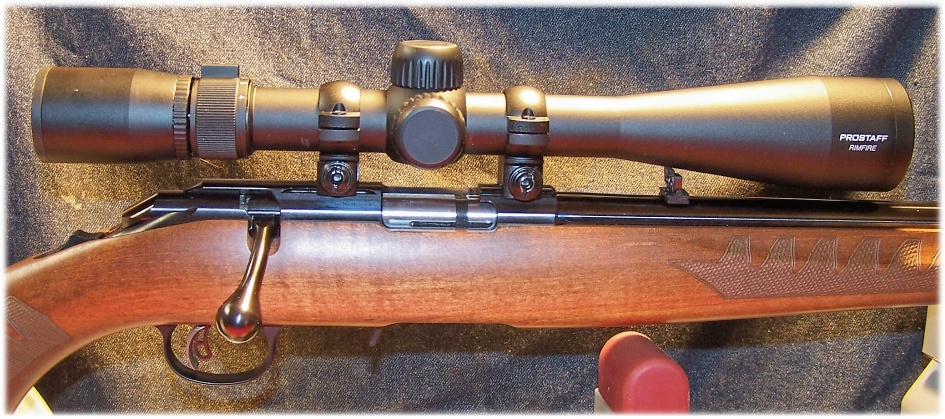It is not unusual for me to try out different, reasonably-priced scopes on a rifle until I find one that I like. After all, you can read the reviews and reports, and after reading many of them you will still be standing in the dark.
The cost of a rifle scope can be easy on your pocketbook or force you to take out a second mortgage on the homestead. The quality of a scope is usually judged on price and a manufacturer’s name, and is not unlike shopping for many firearms. For myself, I look for budget scopes that will give me the best quality; I am not one to put a $1,000 scope on a $300 rifle. I am not a hunter, a long-range shooter, or a precision-driven marksman. I simply want to hit what I am shooting at, but as important to me is the ability to see what I am shooting at. On that same token, I am not about to put a $300 scope on a $1,000 rifle. I do have my pride, you know.
When I purchased a Ruger American Rimfire 22LR rifle, it was clear to me that I would be “glassing” it with some sort of magnified optic. It’s not like I haven’t put a scope on a rifle before. I have; however, discovered that each rifle has its own personality; a personality that should be shared with a scope of the same personality, or at least as close as possible.
The first scope that was mounted on the Ruger American Rimfire 22LR rifle was a Bushnell 4×32 scope that was purchased at a local Wal-Mart; it was very cheap. I didn’t realize how cheap until it was mounted and taken to the range for sighting in. It was obvious that it had to be replaced. The scope rings; however, were very good and held tight to the rifle’s 3/8-inch dovetail mount, once tightened to a proper torque setting (15-inch pounds). I really did not want to engage in a search for different scope rings, which were for a 1-inch scope tube. Although the option to purchase a scope base/rail was present, my heart really wasn’t into internet searches for rings and mounts.
 Not long after I realized that the Bushnell was not going to work, I also realized that I had another scope, which was actually purchased for another rifle, but did not work out, that just might work – a Bushnell Banner 3-9×40 with illuminated reticle. Cool! But, it turned out to be not so cool. The scope did fit the scope rings well, it had a larger objective lens, it had more (variable) power, and I could simply turn a knob that would illuminate the reticle green or red, according to my preference. It also had a thick reticle. I felt that the reticle was too thick for my intended use of the rifle, which was mainly to be plinking and target shooting. The scope zeroed well, the rifle’s bolt handle cleared the eyepiece housing well, and I thought that all was well – until I shot my friends Anschutz .22 caliber rifle that had a Nikon Rimfire 3-9×40 scope mounted on it.
Not long after I realized that the Bushnell was not going to work, I also realized that I had another scope, which was actually purchased for another rifle, but did not work out, that just might work – a Bushnell Banner 3-9×40 with illuminated reticle. Cool! But, it turned out to be not so cool. The scope did fit the scope rings well, it had a larger objective lens, it had more (variable) power, and I could simply turn a knob that would illuminate the reticle green or red, according to my preference. It also had a thick reticle. I felt that the reticle was too thick for my intended use of the rifle, which was mainly to be plinking and target shooting. The scope zeroed well, the rifle’s bolt handle cleared the eyepiece housing well, and I thought that all was well – until I shot my friends Anschutz .22 caliber rifle that had a Nikon Rimfire 3-9×40 scope mounted on it.
The Nikon was an excellent scope with an excellent reticle that included BDC marks for shooting at various distances. The scope itself, is intended for a fifty-yard zero with BDC marks for seventy-five, one-hundred, one-hundred twenty-five, and one-hundred and fifty yards (hence the 150 in the product name), which are distances that I actually hope to shoot at one day since I frequent a twenty-five yard range, but hope to experience the “Project Appleseed” at some point in my life. With my old eyes, a magnified optic would be a must. I don’t consider a magnified optic an advantage over open sights used by people with young eyes; a magnified optic simply levels the playing field a bit. (Author’s Note: I have included a link to a review of “Project Appleseed” at the end of the article.)
Of course, being the typical American male that I am only meant that if a little magnification is good, more must be better. But, in my own defense, I did not think that way at first. It was only when I discovered the Nikon PROSTAFF RIMFIRE II 4-12×40 BDC 150 did I begin to think that way.
Let’s take a look at the basic features of the Nikon PROSTAFF RIMFIRE II 4-12×40 BDC 150 first.
THE BASICS:
- Magnification: 4 – 12 x
- Objective Diameter: 40 mm
- Exit Pupil: 3.3 – 10 mm
- Field of View: 7.9 – 23.6 ft @ 100 yds
- Tube Diameter: 1 in
- Eye Relief: 3.7 – 3.7 in
- Eyepiece Outside Diameter: 44 mm
- Weight: 13.6 oz
- Overall Length: 14 in
- Adjustment Graduation: 1/2 in
- Max Internal Adjustment: 60 MOA
- Parallax Setting: 75 yds
- Waterproof/Fogproof: Yes
- Spot On Custom Turret:Yes
- Matte Finish: Yes
- Use: Rimfire
- Reticle: BDC 150
FIT N’ FINISH:
The Nikon PROSTAFF RIMFIRE II 4-12×40 BDC 150 has a very nice matte finish that is evenly applied throughout the scope. The turret caps are also of the same finish and are not obtrusive, and all matched the matte finish of the scope rings, thus providing a clean overall look to the scope.
TO TALK ABOUT MY SCOPE WOULD BE RETICLEOUS!
Yes, reticleous is a word. I used it; therefore, it must be. Perhaps, Merriam-Webster will get around to adding to the dictionary next year with some of the other ridiculous words of late. One of the features of the Nikon PROSTAFF RIMFIRE II 4-12×40 BDC 150 is the clarity of the lenses and an excellent reticle that aids in focusing the eye to the center point. At first, I found the BDC indicators bothersome (see, “CONDITIONAL” BDC), but after using the scope for a bit I found them to be, well, not as bothersome.
MY, BUT YOU HAVE A LONG ONE THERE!
The Nikon PROSTAFF RIMFIRE II 4-12×40 BDC 150 is a full two inches longer, at fourteen inches, than that Bushnell 3-9×40 scope that I had previously mounted on the Ruger American Rimfire 22LR. I was concerned with the additional length, but it turned out not be a concern.
I had left the scope rings where they were with the Bushnell 3-9×40 scope that I had mounted in hopes that the spacing would also work with the Nikon PROSTAFF RIMFIRE II 4-12×40 BDC 150 and luckily the spacing was good enough to be left alone. The biggest concern is to get the eye relief positioned correctly for my eye and the way that I shoot, which is primarily bench-rested.
I had no issues with ring height with the Bushnell. With a medium scope ring height, I could simply lay my cheek lightly on the stock of the rifle and the eyepiece lens was right there for me. Since the Nikon was the same center as the Bushnell unit, that was not going to be an issue. The eyepiece outside diameter of the Nikon PROSTAFF RIMFIRE II 4-12×40 BDC 150 was actually smaller than that found on the Bushnell unit, since there was no electronic illumination with the Nikon unit, which meant that bolt handle clearance was also not going to be an issue.
Since the majority of the scope is forward of the rings, I was not worried about clearing the rear sight. The 3-9×40 Bushnell scope cleared the rear sight quite well and the PROSTAFF RIMFIRE II 4-12×40 BDC 150 did as well when using the same scope rings.
TURRET ADJUSTMENTS:
Once the turret caps are removed, a finger-adjustable turret for elevation and windage is available for use. The Nikon PROSTAFF RIMFIRE II 4-12×40 BDC 150 incorporates Spring Loaded Instant Zero-Reset Turrets to simplify field adjustments. I can zero the scope at my desired distance, lift the spring-loaded adjustment knob, and rotate it until the “zero” indicator on the adjustment knob matches the alignment mark on the adjustment base. Field adjustments are as simple as dialing-in the subsequent ranges.
It should be noted that Adjustment Graduation of windage and elevation is ¼ MOA @ 50 yards.
It should be noted that the turret caps are of some polymer material, are finely threaded, and care should be taken when attaching the caps to prevent the threads from stripping.
PARALLAX:
I was somewhat concerned about the Parallax Setting being at seventy-five yards, especially since the majority of my shooting is at an indoor range with a twenty-five yard limit.
Parallax, the distance the eye can move from the optical axis of the scope, is determined by exit pupil size. There is no parallax, at any distance, as long as the eye is lined up exactly with the optical axis of the scope. It is important to know that in every scope; however, there is some parallax. It is also important to know that in every scope, there is one shooting distance at which there is no parallax. In most rifle scopes this one point of zero parallax is usually placed at a suitable mid-range point in the scopes’ focal range. In the case of the Nikon PROSTAFF RIMFIRE II 4-12×40 BDC 150, parallax is zero at seventy-five yards.
However, I was not concerned too much with parallax as I would be using a low magnification setting with a target at a close distance. Parallax is usually more evident at higher magnification settings with the target at a greater distance. Focusing the scope for closer distances would be another matter.
The PROSTAFF RIMFIRE II 4-12×40 BDC 150 does not have parallax adjustment capabilities.
If you are unfamiliar with parallax, here is a good source that explains it; Understanding and Correcting Parallax: http://blog.cheaperthandirt.com/understanding-and-correcting-parallax/
RETICLE FOCUSING:
 Reticle focusing is available by; loosening the eyepiece locking ring, turning the eyepiece in the desired direction to make the reticle as clear as possible, and then tightening the locking ring.
Reticle focusing is available by; loosening the eyepiece locking ring, turning the eyepiece in the desired direction to make the reticle as clear as possible, and then tightening the locking ring.
OBJECTIVE FOCUSING:
The Nikon PROSTAFF RIMFIRE II 4-12×40 BDC 150 does not have objective focusing capabilities.
MAGNIFICATION ADJUSTMENT:
I find that a magnification of “6” is perfect for my aging eyes and with my indoor range lighting conditions.
The Nikon PROSTAFF RIMFIRE II 4-12×40 BDC 150 incorporates an easy-to-adjust magnification raised tab that allows for smooth transition from one magnification level to another. Magnification levels are clearly marked in white and an index point is well marked on the housing. After using the magnification ring’s raised tab for a while, I could almost tell what magnification level the scope was set at by simply observing the position of the magnification adjustment lever (6x is right at the 6 0’clock position). In most cases; however, I would simply turn the adjustment ring to my desired setting and not worry about what magnification level I am at.
“CONDITIONAL” BDC:
It should be noted that BDC is “conditional,” as it is one of those “it depends” things. Bullet weight and velocity is two of the dependencies that contribute to bullet drop. To put is simply BDC marks are relative to many things. The discussion of bullet drop compensation is far beyond the purpose of this article. Suffice it to say that the BDC of the Nikon PROSTAFF RIMFIRE II 4-12×40 BDC 150 is calibrated to the .22 caliber under certain conditions.
To go further with this BDC issue, I have included a comparison of two different .22 caliber cartridges; the .22 Long Rifle High Velocity and Hyper Velocity, CCI Stinger CPHP, 32gr with a muzzle velocity of 1639 fps and the .22 Long Rifle High Velocity and Hyper Velocity, CCI Mini-Mag CPRN, 40gr with a muzzle velocity of 1234 fps.

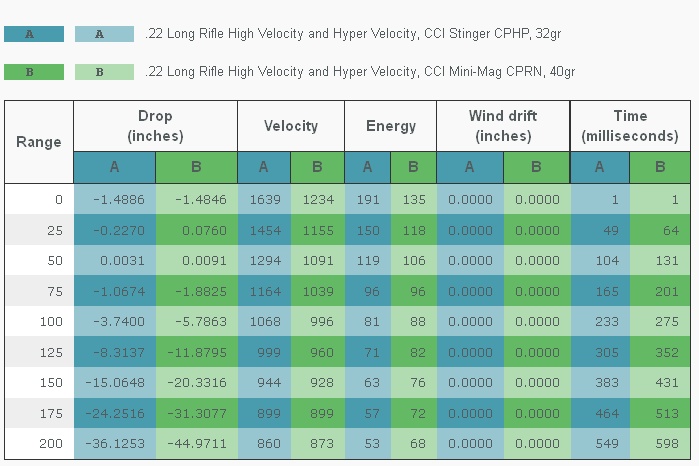
You can see that there are distinct differences in POI between these two rounds, which begins at about seventy-five yards. The 22 Long Rifle High Velocity and Hyper Velocity, CCI Stinger CPHP, 32gr with a muzzle velocity of 1639 fps would probably be as close to corresponding to the BDC marks of the scope; however, with the .22 Long Rifle High Velocity and Hyper Velocity, CCI Mini-Mag CPRN, 40gr with a muzzle velocity of 1234 fps, there would be little if any corresponding with the BDC marks.
What this essentially means is that you (I) must determine, according to the ammunition we are firing, what the BDC marks actually correspond to downrange. In other words, shots are taken at specific intervals of distance, and for the sake of discussion let’s say that those intervals are twenty-five yards. We know that at fifty yards, we hold dead center. As the distance increases, the cross-hair is raised to compensate for bullet drop at the distance further than our zero distance. Let’s say that we are shooting at a target seventy-five yards distant. Again, we hold the cross-hair dead-on on the target. The POI will then be observed. Next, we bring the reticle up to the first BDC point, which according to the Nikon is the seventy yard sight point. Take the shot and again to observe the POI, Chances are that the POI will be much lower than what was expected. The sight picture might have to be raised to the second, or even to a lower BDC mark, to achieve POI at your desired POI.
 Personally, I would rather compile the cartridge data in a “Dope” book for the selected cartridge and use the turret to dial-in the needed amount of elevation, or windage for that matter, to place the bullet where I need it to be placed. With a good graph and chart, I can dial-in “clicks” as I need to at distances beyond my zero distance or even at distances closer than my zero point, and sight dead-on as I would at my zero distance.
Personally, I would rather compile the cartridge data in a “Dope” book for the selected cartridge and use the turret to dial-in the needed amount of elevation, or windage for that matter, to place the bullet where I need it to be placed. With a good graph and chart, I can dial-in “clicks” as I need to at distances beyond my zero distance or even at distances closer than my zero point, and sight dead-on as I would at my zero distance.
While BDC marks are nice, they are not necessary. While trying to simply the sighting process, in many ways BDC marks make the sighting process more difficult, in my opinion.
Anyway, the Nikon PROSTAFF RIMFIRE II 4-12×40 BDC 150 has BDC and I will learn to work with them as necessary.
To get a better idea of BDC scopes and their usefulness, I have provided the following link; The Straight Dope on BDC Scopes: http://www.luckygunner.com/lounge/the-straight-dope-on-bdc-scopes/
With that said, I find the Ballistic Calculator @ http://gundata.org/ballistic-calculator/ to be an excellent source for bullet data regarding bullet drop at distances out to 500 yards.
FINAL IMPRESSION:
While the Nikon PROSTAFF RIMFIRE II 4-12×40 BDC 150 would look out of place mounted on a Ruger 10/22 or other short .22 caliber carbine, the scope looks right at home atop the Ruger American Rimfire 22LR as it would with any long-barreled rifle. Compared to the “bulldog” look of the Bushnell Banner 3-9×40 with illuminated reticle, the Nikon PROSTAFF RIMFIRE II 4-12×40 BDC 150 looks like a greyhound.
The scope is well-constructed and well-finished. The optics is clear and allows a lot of light in so that reticle and target is easily seen. If less light is desired, such as when shooting with the sun in front of you, a separate sun shield can be purchased, which attaches to the objective lens housing.
The scope has a good range of magnification that is well-suited for the intended range of the scope. While the scope may be over-magnified for my current use, I find the “6” setting near perfect for my indoor range work. When I get to take this puppy outdoors for some longer distance shooting, my old eyes will welcome the higher magnification.
While not near the high end of rifle scopes, the Nikon PROSTAFF RIMFIRE II 4-12×40 BDC 150 is certainly an excellent value for the money and the caliber for which it is intended.
RESOURCES:
- PROSTAFF RIMFIRE II 4-12×40 BDC 150: http://www.nikonsportoptics.com/en/Nikon-Products/Riflescopes/PROSTAFF-RIMFIRE-II-4-12×40-BDC-150.html#tab-ProductDetail-ProductTabs-TechSpecs
- Rifle Marksmanship Training with Project Appleseed: http://www.luckygunner.com/lounge/what-is-project-appleseed/
![]()


